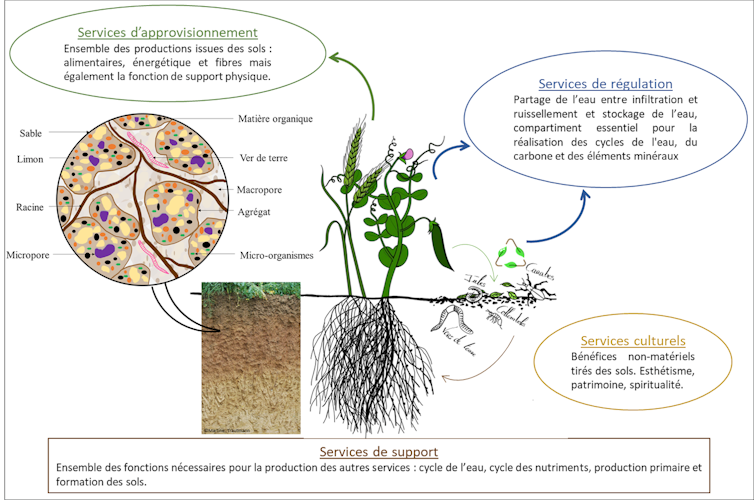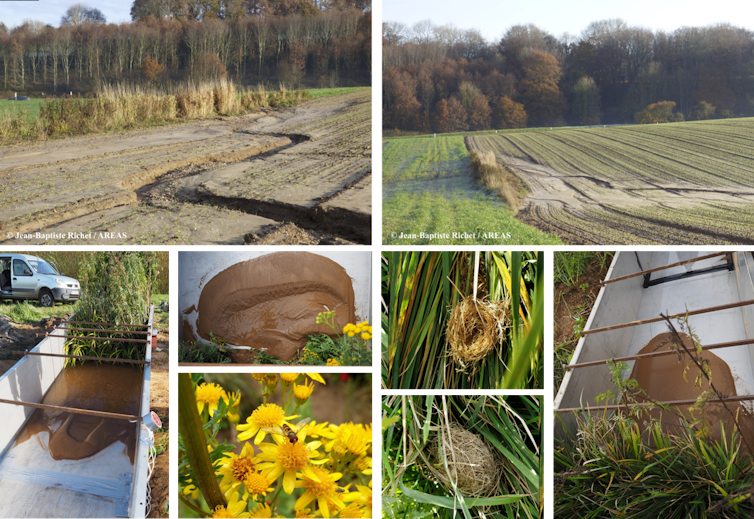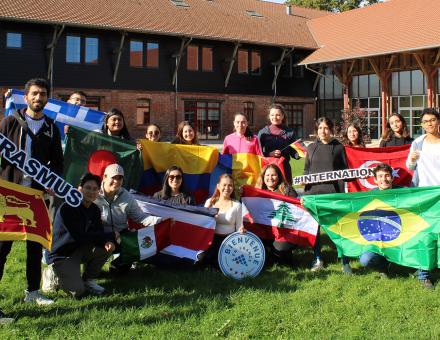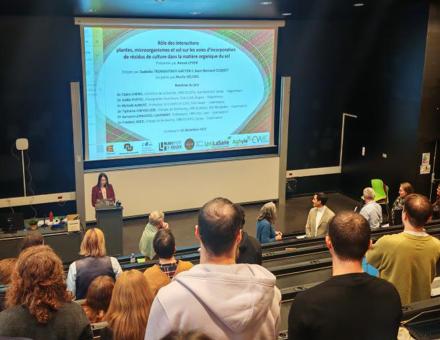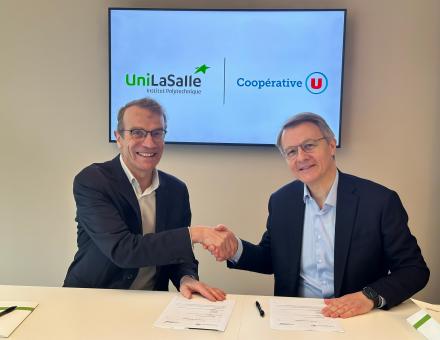Discover the new article by Michel-Pierre Faucon, Caroline Ugarte and Léa Kervroëdan, respectively Lecturer-Researcher in Plant Ecology and Agroecology - Research Director UniLaSalle Beauvais, Adjunct Assistant Professor, and Lecturer-Researcher in Plant Ecology and Agroecology, for The Conversation
Soil is a true natural capital. Beyond these properties, it is characterized by its organic carbon stock (twice as important as the atmosphere) and its remarkable biodiversity (25% of total biodiversity and 40% of animal biodiversity).
It is a non-renewable resource since it would take about a thousand years to create one centimeter of soil. They have multiple functions and provide many services for billions of living beings including humans.
Soil is one of the pillar resources providing a multitude of ecosystem services to humans, divided into four main categories: support, provisioning, regulation and cultural.
Provided by the author
However, soils are threatened by human activities causing the degradation of 33% of the world's soils: a loss of functions and services, such as its capacity to produce food resources, sequester carbon, conserve water and filter it, maintain biodiversity and soil fertility. Among the main causes, soil compaction and erosion, whose mitigation is possible thanks to the discoveries of the last decades leading to solutions based on plant engineering
Settlement and erosion, the two main degradations of soils
Soil compaction corresponds to a loss of porosity and a discontinuity of pores (that which allows oxygenation of a soil, infiltration, displacement and storage of water); it is caused by the traffic of agricultural or forestry machines. It represents a magnitude of 36 million hectares in Europe, that is to say 4% of the European land.
Soil erosion is accelerated by the cultivation of sloping soils, stripped of vegetation during rainy periods (loss of soil by runoff). These degradations are accentuated by the decrease in organic matter content of the soils in the French regions of large-scale farming (north and southwest of France), which is partly explained by a specialization and simplification of agriculture associated with a decrease in livestock farming, and thus the reduction of organic inputs from livestock effluents (such as manure), and the frequency and surface area of forage crops rich in legumes.
Soil compaction corresponds to a loss of porosity at depth and a discontinuity of pores in the surface horizons. This degradation leads to other impacts, such as difficulty for roots to penetrate the soil (especially during drier periods), and reduced oxygen availability and accessibility to water and nutrients in the soil for and by the roots, and therefore yields.
Soil erosion is the loosening of soil surface particles by water or wind. Erosion caused by runoff is a common natural hazard in tropical, Mediterranean and temperate regions. Soil erosion is also at the origin of muddy water flows with sometimes catastrophic consequences (18,000 muddy flows in the last fifteen years) and a loss of fertile soil and phosphorus. 50% of phosphorus losses in cultivated soils would be explained by erosion, leading to other environmental consequences such as eutrophication of surface waters. The decrease in organic matter content accelerates the intensity of erosion and soil compaction, since in many soils it leads to a degradation of the soil structure through a loss of cohesion and soil resistance.
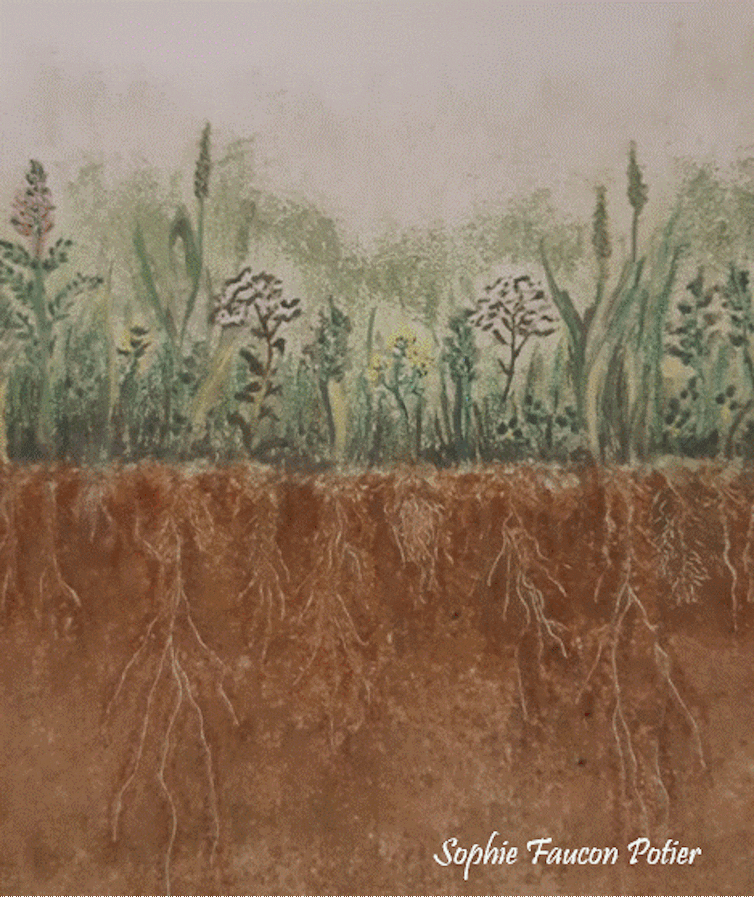
Painting by Sophie Faucon Potier.
Provided by the author
Fortunately, many initiatives and actions in ecological and agroecological engineering have been carried out by farmers (about 15% of French farms in 2021) and scientists over the last decade to preserve soils or restore degraded soils. Plants, directly or indirectly, allow to protect and restore them. We did not invent their genius, we do nothing better than understand and use plants to protect the soil. The current challenge is to accelerate them through inclusive research and training of agricultural development actors.
Reducing the risks of compaction and erosion through plant engineering
The fight against compaction and erosion is based on the management of soil structure, which corresponds to the spatial arrangement of mineral and organic particles in the soil. This soil structure is formed and reinforced in part by the activity of roots and soil organisms. The development of recent research on the role of roots in soil cohesion (i.e., its ability to resist slippage of its component grains in order to resist shear stress), and other associated physical processes: its structural stability (i.e., the ability of soil aggregates to resist the degrading action of rainfall), its resistance to deformation and detachment of soil particles provides a knowledge base for soil conservation and management.
The use of plant roots is a preventive solution both to maintain the stability of slopes and banks and to limit compaction and in particular the deformation of the soil causing the loss of pore continuity, called shearing. This is a novelty for the management of agroecosystems, via the roots of annual plants, such as intercropping (crop between two main crops), and in a context where the soil is subjected to wheel loads of up to ten tons. Species with both high root length and volume (per soil volume), especially in the top 20 cm of soil, would be good candidates for reducing shear settlement. For example, faba beans and other species with similar traits would be excellent candidates for reducing shear settlement under agricultural traffic.
Plants with high root mass and length per volume of soil increase soil permeability and thus infiltration, reducing runoff. This is the case with cultivated flax and some plants of the cabbage family (such as forage turnip), and many legumes (e.g. sweet clover). These same roots increase structural stability and reduce the risk of soil particle detachment and thus soil erosion.
Vegetation cover through its canopy structure also reduces soil detachment caused by raindrop splash and runoff formation. Vegetation with dense ground cover, i.e. high leaf area, has a positive effect on reducing raindrop energy. The use of intermediate crops in summer or permanent cover crops with a wide range of species and full soil coverage is therefore recommended in areas with a high erosion risk. Sowing densities are now recommended to maximize the coverage and productivity of these covers.
The aerial part of the vegetation also plays a role in the reduction of soil erosion since it constitutes a hydraulic brake, reducing the intensity of runoff and favoring sedimentation. Plants with dense above-ground vegetation during the rainy season (such as sedges and grasses) that are sufficiently high in relation to the height of the water table will help reduce runoff, especially in cultivated areas (basins) with low vegetation cover at the beginning of the crop.
Recently, we have shown that plants that have both surface area and density of leaves extending from the base of the stem during the fall and winter periods are the best candidates to act as runoff control and reduce soil erosion.
Herbaceous hedgerows are capable of retaining up to 84% of transported soil particles (depending on the morphology of the species in place) as well as limiting gully formation and downstream soil particle stripping, by slowing the velocity of runoff flows.
Provided by the author
This discovery leads to the development of herbaceous hedges in areas of concentrated runoff to promote sedimentation, reduce soil erosion and mudflows. These herbaceous hedges (10 to 20 square meters), which we tested, can be composed of native plant species to provide other services such as biodiversity conservation.
Restoring degraded soils
When the soil is compacted, the objective of the restoration is to restructure it by plants and animals and soil microorganisms. Either from species that are resistant to the compacted soil and therefore to asphyxiation (such as plantains and sedges), or from others with larger diameter roots (> 2 mm), they will penetrate certain compacted areas, especially when the soil is wet and more plastic (such as fodder radish and faba bean). Plant species that do not have these capacities will slip through the cracks in the soil to reach the deeper horizons (such as phacelia, rough oats, etc.).
All these root strategies allow to restructure a part of the soil (since it takes about 6 to 10 years to restructure a compacted soil) notably by maximizing the vegetation duration of the cover. The combination of these soil exploration strategies in a context of compacted soil would thus allow maximizing the production of plants and crops and thus the functioning of degraded eco or agrosystems. Plants are not the only actors in the restoration of degraded soils. They have an indirect effect by stimulating earthworms under conditions of reduced or no tillage by returning organic matter to the soil (i.e., crop residues, and other organic matter inputs such as manures). Earthworms, and in particular those that circulate from the surface to the depths (anecic), induce and restore soil macroporosity essential for water infiltration and soil aeration, and thus plant nutrition and development.
Plants that promote the conservation or improvement of soil structure through better aggregation of soil constituents (minerals, organic carbon and bacteria) are a real asset for the development of agroecology since they allow both to fight against soil deformation (especially by shearing) and erosion, while providing a multitude of other services: improved water availability (better water retention and capillary rise), reduced risk of water deficit in periods of moderate drought, water filtration to maintain water quality and participate in groundwater recharge, and soil carbon sequestration to mitigate climate change. The Conversation
Michel-Pierre Faucon, Associate professor in Plant Ecology and Agroecology - UniLaSalle Beauvais Research Director, UniLaSalle; Carolina Ugarte, Adjunct assistant professor, UniLaSalle and Léa Kervroëdan, Associate professor in Plant Ecology and Agroecology, UniLaSalle
This article is republished from The Conversation under a Creative Commons license. Read the original article.



